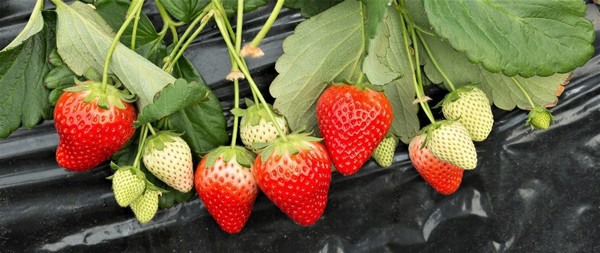Minas Gerais is the largest strawberry producer in Brazil, with more than 2,930 hectares planted and production expected to reach 167,000 tons by 2022. Despite all this potential, growers face the challenge of importing most of the seedlings planted each year, which results in higher costs and a reduction in profit margins. This is a common problem in the country's main growing regions. In order to overcome this and other bottlenecks in the production chain, research, technical assistance, and rural extension institutions from Minas and four other states (São Paulo, Espírito Santo, Paraná, and Santa Catarina) have joined forces to create the Rede Morangos do Brasil.

Officially launched on Tuesday, March 29, the project aims to boost the productivity and income of growers. Research will aim to facilitate the genetic improvement of strawberries and the development of the necessary technology for seedling production, while improving plant nutrition, pest and disease control, as well as the post-harvest and marketing processes.
The State Company for Technical Assistance and Rural Extension of Minas Gerais (Emater-MG) and the State Company for Agricultural Research (Epamig), both linked to the Ministry of Agriculture, Livestock and Supply, are the representatives of the Government of Minas Gerais in the Network. According to Emater-MG's State Technical Coordinator for Fruit Growing, Deny Sanábio, the purchase of seedlings accounts for more than 60% of the growers' production costs. "We are highly dependent on seedlings from abroad, which are imported from Chile, Argentina and Spain. Investment in research could lead to the development of new varieties, stimulate the production of quality seedlings and partially or even totally reduce this dependence on imported seedlings," he says.

Deny Sanábio, of Emater-MG, said that the Network could help in the development of a project coordinated by Epamig researcher Mário Sérgio Carvalho Dias, who foresees the multiplication of genetic material in the biotechnology laboratory of Epamig Norte (in Nova Porteirinha), carried out with domestic strawberry hybrids selected in breeding programs by Epamig, the State University of Londrina and the Agronomic Institute of Campinas.
Mário Sérgio said that the research is also targeting the main viral diseases that affect plants and are transmitted by seedlings. At a later stage, these improved hybrid plants will be multiplied and the seedlings will be grown in 13 Demonstration and Observation Units located in the main producing regions of Minas Gerais. The productivity of the new varieties and the characteristics of the fruit will be evaluated by monitoring the plants in the field.
For more information:
Emater-MG
www.emater.mg.gov.br
